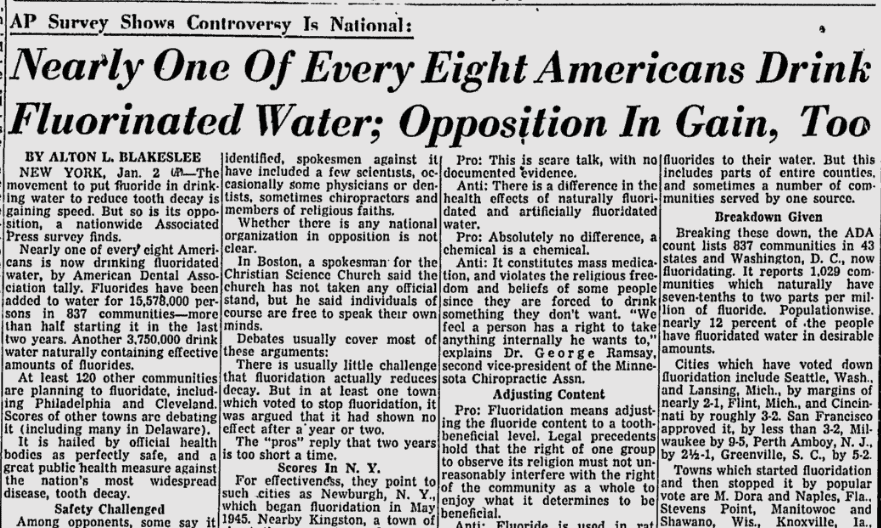No fluoride added to island water, ever

A new statewide push by State Surgeon General Dr. Joseph Ladapo to discourage the fluoridation of Florida water will not affect residents of Boca Grande and Cape Haze, as the water here is not fluoridated.
“We do not add fluoride and never have,” said Gasparilla Island Water Association Executive Director Ron Bolton. Bolton told the Beacon that water fluoridation has been an “ongoing discussion in the utility industry for decades.”
The situation is the same for Charlotte County. County utilities do not add fluoride to water systems, according to Caroline Wannall, public relations manager for Charlotte County Utilities and its Peace River and Burnt Store units.
“However, fluoride is a naturally occurring chemical found in acceptable levels in Peace River and Burnt Store water from the breakdown of rocks and soils,” said Wannall.
While the practice is widespread across the U.S., including Florida’s own Alachua, Bay, Brevard, Hillsborough, Pinellas and Lee Counties, smaller water utilities do not typically add fluoride. In February, Collier County voted to no longer add the element to water. Naples voted to stop the practice this week, on Wednesday.
On Nov. 22, Ladapo announced that he recommended against community water fluoridation “due to the neuropsychiatric risk associated with fluoride exposure, particularly in pregnant women and children, and the wide availability of alternative sources of fluoride for dental health.”
According to the American Dental Association, the whole idea of fluoride and tooth decay prevention came about early in the 20th century when Dr. Frederick McKay, a young dentist, opened a dental practice in Colorado Springs, Colorado, and was surprised to discover that many residents exhibited brown stains on their permanent teeth. He also discovered that the stained teeth were “surprisingly resistant” to decay. He wrote to the U.S. Surgeon General in 1926, after noticing several regions in Colorado, New Mexico, Arizona, California, Idaho, South Dakota, Texas and Virginia where mottled enamel existed.
Water fluoridation began in the U.S. in 1945 with the use of sodium fluoride, and was eventually extended to the use of silicofluorides. According to the ADA, based on the success several decades earlier of the use of iodized salt for the prevention of goiter, fluoridated salt was introduced in Switzerland in 1956.
In the directive from Dr. Ladapo, it stated that fluoride is now widely available from multiple sources, including topical fluorides, such as toothpaste, mouthwashes, and fluoride applications by dental providers. “Evidence shows fluoride strengthens teeth, making them more decay resistant,” said the state in the release. “However, additional research is being conducted to review the impacts of overall fluoride exposure in the population.”
Dozens of jurisdictions have given up on adding fluoride in recent years; in 2011 the federal government recommended lowering the level of additive, as fluoride was often in water already. The issue has always been political. The issue came back this fall, as Robert F. Kennedy Jr., nominee for Secretary of Health and Human Services, stated that he is against the addition of it to municipal water systems.
The question for the state of Florida is on its effect.
“It is clear more research is necessary to address safety and efficacy concerns regarding community water fluoridation,” said State Surgeon General Dr. Joseph A. Ladapo. “The previously considered benefit of community water fluoridation does not outweigh the current known risks, especially for special populations like pregnant women and children.”









